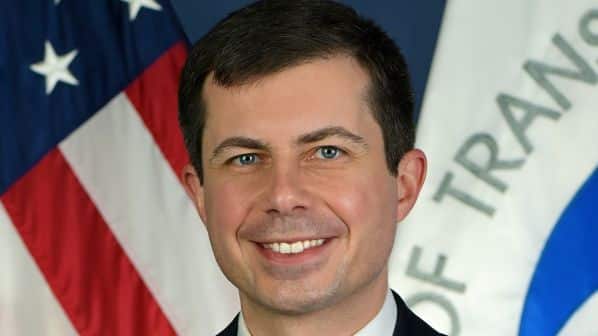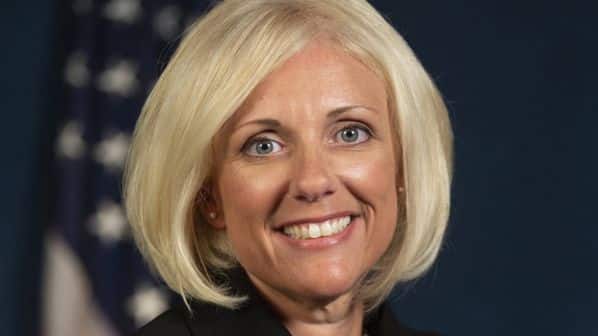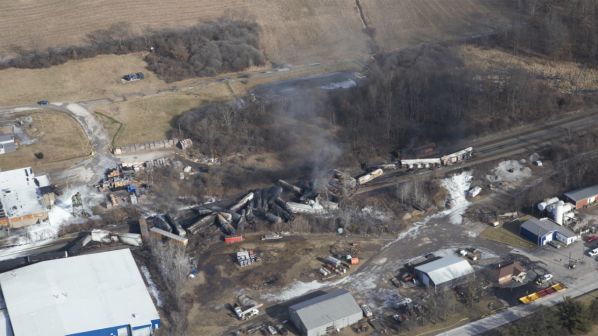THE US Department of Transportation (USDOT) has issued immediate calls for action to hold the US rail freight industry accountable and improve safety 18 days after 50 wagons of a Norfolk Southern (NS) train carrying vinyl chloride and a variety of other freight derailed in East Palestine, Ohio, causing a massive fire which forced the evacuation of a large area.
While there were no injuries and the derailment is currently being investigated by the US National Transportation Safety Board (NSTB), USDOT wants accelerated introduction of safer tank wagons, workers to be provided with paid sick leave, and existing caps on fines for breaching rail safety regulations to be increased.

USDOT’s pronouncement immediately followed transportation secretary Mr Pete Buttigieg’s letter to NS CEO Mr Alan Shaw in which he called for “an end to the rail industry’s vigorous resistance to increased safety measures, which has included litigation and lobbying Congress … Norfolk Southern and your industry must demonstrate that you will not seek to supercharge profits by resisting higher standards that could benefit the safety of workers and the safety of American communities.”
Buttigieg added that NS should adopt “a posture that focuses on supporting, not thwarting, efforts to raise the standard of US rail safety regulation.”
“We at USDOT are doing everything in our power to improve rail safety, and we insist that the rail industry do the same - while inviting Congress to work with us to raise the bar,” Buttigieg said.
The steps he expects the industry to take include:
- protecting workers who spot safety issues from reprisal, by joining the Federal Railroad Administration’s (FRA) Confidential Close Call Reporting Programme
- deploying new inspection technologies without seeking permission to abandon human inspections
- requiring the owners of tank wagons to expedite the phase-in of safer DOT 117 tank wagons in advance of the Congressionally-mandated 2029 deadline
- railways providing advance notice to state emergency response teams when hazardous gas tank wagons are moving through their states instead of expecting first responders to look up this information after an incident occurs, and
- providing paid sick leave.
USDOT said it will further enhance its work on rail freight safety, including:
- advancing the Train Crew Staffing Rule, which will require a minimum of two crew members for most rail operations
- initiating a focused safety inspection programme on routes over which high-hazard flammable trains (HHFTs) and other trains carrying large volumes of hazardous material operate
- initiating a focused inspection programme of legacy tank wagons and the shippers and railways who have chosen not to upgrade to DOT 117 tank wagons
- deploying the resources from the Bipartisan Infrastructure Law under several programmes to fund projects that modernise and improve track, eliminate level crossings and improve rail safety, and
- pursuing further rule making, to the extent possible under current statute, on HHFTs and electronically-controlled pneumatic (ECP) brakes.
Congressional action sought includes Increasing the maximum fine of $US 225,455 that USDOT can impose on rail companies for violating safety regulations, pushing past industry opposition to expand and strengthen rules governing high-hazard shipments, modernising braking regulations and increasing the use of ECP braking, speeding up the phase-in of DOT 117 tank wagons, and increasing funding to increase hazardous materials training for first responders.
AAR Responds
The Association of American Railroads (AAR), in responding to USDOT’s pronouncement, claimed NTSB’s investigation of the NS accident is being “impeded by politics and speculation.”
“No community should ever face the events of February 3,” said AAR president and CEO Mr Ian Jefferies. “This is why railroads are steadfastly committed to solutions-oriented steps that directly address the cause of the accident and could prevent a similar accident from occurring elsewhere.
“NTSB’s independent investigators continue their work to identify the accident’s root cause and contributing factors. That investigation must continue unimpeded by politics and speculation so NTSB’s findings can guide what additional measures may have prevented this accident.
“All stakeholders - railroads along with federal, state and local officials - must work to restore the public’s trust in the safety and security of our communities. We can only do that by letting the facts drive the post-accident response. At this time, the focus must be on the most pressing issue at hand - ensuring the community of East Palestine has all the support it needs as it moves forward.”
Among the issues to which AAR is referring are how the vinyl chloride on the NS train was classified, and whether the train should have been equipped with ECP brakes.
NTSB response

In a series of tweets on February 17, NTSB chair Ms Jennifer Homendy said: “To everyone affected: know that NTSB is working vigorously to understand what caused this train derailment - so it never happens again … NTSB investigators will thoroughly examine the tank cars once decontaminated. As always, we’ll issue urgent safety recommendations as needed. Urgent safety recommendations may be issued at any time; meaning, we don’t wait until the end of our investigation if immediate safety action is warranted.
“Nothing is more important than accuracy at a moment like this, which is why the NTSB is deliberate in our approach to investigations … Anyone speculating about what happened, didn’t happen, or should have happened is misleading a suffering community.
“Some are saying the ECP brake rule, if implemented, would have prevented this derailment. That is false. The ECP braking rule would have applied only to HHFTs. The train that derailed in East Palestine was a mixed [train] containing only three placarded Class 3 flammable liquids cars. This means even if the rule had gone into effect, this train would not have had ECP brakes.”

